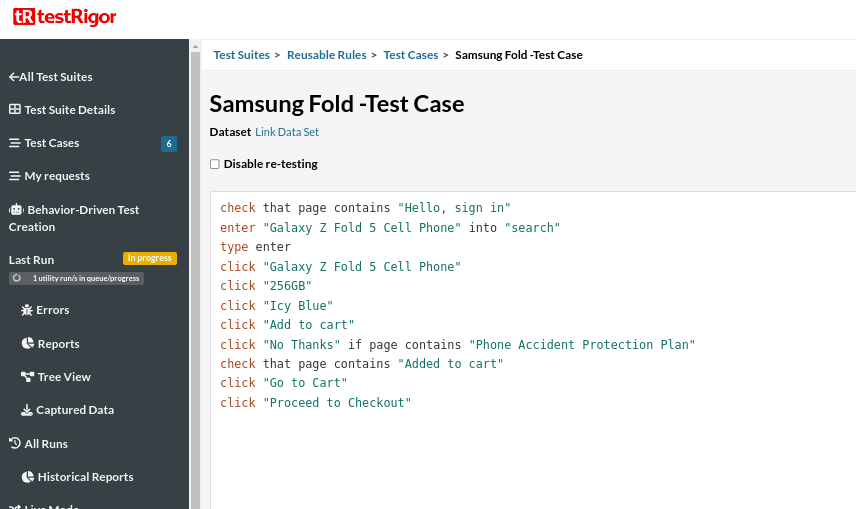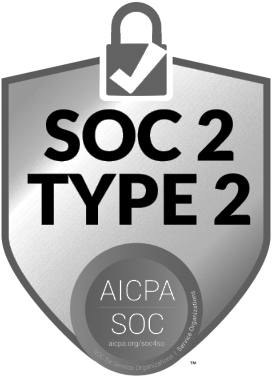
QAWolf Alternative
Codeless automation transforms test automation by allowing users to create, execute, and maintain tests without writing traditional code. By reducing the reliance on programming skills, teams can streamline testing processes, accelerate deployment cycles, and involve a broader range of stakeholders in quality assurance. Many tools are being marketed as ‘codeless’ however, they lack the codeless features in reality.
If you are using QAWolf for test automation and looking for a powerful and intelligent alternative that is codeless in the true sense, you may consider testRigor. Here, we compare the two tools to provide you with clarity and help you make an informed decision.
Key Features of QAWolf
- Codeless Test Creation: Enables users to create automated tests without requiring programming skills.
- JavaScript-Based Flexibility: QA Wolf also allows more technical users to write or edit tests directly in JavaScript.
- Cloud-Based Test Execution: Runs tests in the cloud, which means no local setup is required.
- Parallel Test Execution: The cloud infrastructure of QA Wolf allows for parallel test execution, which speeds up the testing process.
- Automatic Test Maintenance: One of the platform’s standout features is its ability to reduce maintenance overhead.
- CI/CD Integration: QA Wolf seamlessly integrates with popular CI/CD tools like GitHub Actions, CircleCI, and more.
-
Detailed Reporting and Collaboration: The platform provides comprehensive test reports with logs, screenshots, and video recordings of test runs.

-
Record Actions and Generate Scripts: When a user interacts with a web application (such as clicking buttons, filling out forms or navigating between pages), QA Wolf tracks each action and generates corresponding JavaScript code. This code represents the exact steps a user took, allowing the platform to “replay” these interactions as a test, but it is still code.

Issues with QAWolf
Before we move to understanding codeless and simple test automation with testRigor, first understand what are the issues with QAWolf.
Though QAWolf claims itself as codeless automation, it is not devoid of code. For example, you need to modify the programming scripts to add parameterization. So, if you are a tester, you need good proficiency in JavaScript, and the whole purpose of codeless automation is defeated.
It uses Playwright as its foundation for the product, so you know, the problems with Playwright are the problems with QAWolf!
Additionally, factors like code maintenance cause considerable work for testers. For UI changes and application updates, QAWolf is not equipped with self-healing ( adaptation to specification changes ) techniques. You need to add the required changes manually for any change in element locators or functionality. All these factors adversely affect end-to-end testing, increasing the overall testing time and complexity.
Test Automation with testRigor
The tool that you use for E2E testing should be as simple as possible and help in achieving a minimum number of bugs in production. It is possible with the available advanced AI technologies and intelligent AI agents. One such tool that you can rely on is testRigor.
testRigor is a codeless automation tool driven by AI and machine learning, designed to create simple, automatic test scripts and data using plain English. With testRigor, maintaining test scripts requires minimal effort, drastically reducing the time spent on maintenance. Learn how you can cut down test maintenance by up to 99.5%.
You can create automation tests 15 times faster than with Selenium or Playwright. Manual testers can build tests 4X faster than Selenium automation engineers. Impressive, right?
testRigor stands out with advanced features and benefits, making it ideal for teams aiming to streamline and enhance their testing efficiency. Let us go through a few of them.
- Effortless Deployment: testRigor is a cloud-hosted solution, eliminating the need to invest time, effort, and money in building a complex infrastructure for test automation. Simply subscribe to the right plan, and you can easily start generating test scripts.
-
testRigor Locators: One of the major reasons traditional automation tools struggle to build trust is the prevalence of false positive bugs. These issues often arise from changes in the DOM structure, as traditional tools rely on the DOM properties of elements to locate them. When these properties change, the test case fails.testRigor takes a different approach by not depending on element locators at all. In fact, testRigor eliminates the need for element locators entirely. Instead, you can simply refer to the element by its name or position on the screen using plain English. testRigor then intelligently identifies the element and executes the necessary action. For more details, you can explore this blog: testRigor Locators.
-
Plain English Test Scripts: With testRigor’s AI capabilities, you can create test scripts in parsed plain English, eliminating the need for any traditional scripting language. These test scripts resemble application feature statements from a user’s perspective, making them intuitive and easy to understand. Additionally, testRigor offers multiple methods to generate test scripts:
- Generative AI Features: Simply provide a plain English description of a test case and testRigor’s AI will generate the corresponding test cases. You can even select the number of test cases to be generated by AI.
- Record and Playback: Primarily for use with the Chrome browser, this feature allows you to record UI interactions, which testRigor automatically converts into test scripts.
- Import/Copy from Test Management Tools: You can import manual test cases from tools such as TestRail, PractiTest, ALM, and others and run them directly as automated tests using testRigor’s AI-powered platform.
- Visual Testing: testRigor enables comprehensive visual testing for your application. By leveraging machine learning algorithms, testRigor allows you to compare screens or individual elements from previous test executions to detect visual deviations. With testRigor’s visual testing capabilities, you can ensure that all UI elements load correctly on the page, guaranteeing a seamless user experience. Learn more about visual testing with testRigor for accurate UI validation.
-
All-in-One Testing Platform: One common problem with traditional testing is the need to manage multiple testing frameworks for different platforms, such as mobile, web, and desktop. testRigor eliminates this complexity by supporting various types of testing within a single platform. With testRigor, there’s no need to create or maintain multiple frameworks, streamlining your testing processes and reducing overhead. You can perform the below testing types using plain English commands:
- Minimal Maintenance: testRigor drastically reduces the effort required for test maintenance by offering various features that make scripting both easy and resilient. With its advanced capabilities, testRigor provides a 99.5% decrease in test maintenance compared to traditional automation tools, allowing teams to focus more on testing and less on maintenance.
- Seamless Integrations: testRigor provides built-in integrations with a wide range of popular tools to enhance your workflow. It integrates seamlessly with CI/CD platforms like Jenkins and CircleCI, test management systems such as Zephyr and TestRail, and defect-tracking solutions like Jira and Pivotal Tracker. Additionally, it supports infrastructure providers like AWS and Azure, as well as communication tools like Slack and Microsoft Teams, ensuring smooth collaboration and automation across all stages of development and testing.
Now, let’s see a sample test case written in testRigor. You may notice that tests are written in simple English without using flaky XPath/CSS element locators. Here is the testRigor’s top features list and benefits.

Summary: testRigor vs. QAWolf
Now let’s compare both tools based on their features to help you make a good decision:
| Feature / Aspect | QAWolf | testRigor |
| Automation Approach | Low-code/no-code with options for JavaScript customizations | Codeless automation using AI and ML in plain English |
| Test Script Creation | Record user actions to generate JavaScript-based scripts | Plain English scripting, Record & Playback and AI-generated scripts |
| Test Maintenance | Focuses on easy updates but may require more maintenance compared to testRigor | Extremely low maintenance |
| Supported Testing Types | Primarily web applications | Web, mobile, desktop |
| Parallel Testing | Cloud-based parallel test execution | Supports high-scale parallel test execution |
| Scalability | Scalable for web applications via cloud-based infrastructure | Highly scalable across different platforms and browsers |
| Script Generation Methods | Recording actions or writing JavaScript-based test scripts | Generative AI, record-and-playback, import from test management tools |
| Target Audience | Small to medium-sized teams looking for simple, scalable web automation | Enterprises and teams with complex, large-scale automation needs |
| Collaboration | Built for collaborative testing in CI workflows | Enables easy collaboration with test management and communication tools |
| Cost-Effectiveness | Lower cost, but may increase over time due to maintenance overheads. Offers free plans and lower pricing tiers for small teams. | More competitive pricing, providing strong ROI and being easily scalable for larger enterprises. |
Thank you for your request. Please select date and time for a demo.




















